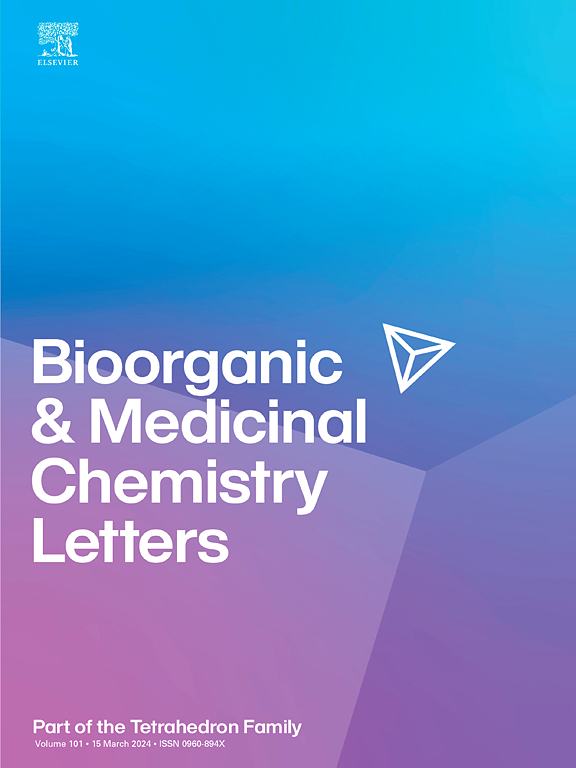Design, synthesis and antitumor evaluation of a novel nectin-4 targeting bicyclic toxin conjugate
IF 2.2
4区 医学
Q3 CHEMISTRY, MEDICINAL
引用次数: 0
Abstract
A Nectin-4 targeting bicyclic toxin conjugate (BTC) BGC1614 was designed, synthesized and evaluated as an antitumor agent. Fluorescence-activated cell sorting (FACS) assay results indicated that BGC1614 exhibited selective and strong binding to Nectin-4-expressing cells in comparison with the clinical drug BT8009. Surface plasmon resonance (SPR) test showed that the equilibrium dissociation constants (KD) for BT8009 and BGC1614 were 3.219 ± 0.412 × 10−7 M and 3.859 ± 0.287 × 10−7 M, respectively, indicating that BGC1614 exhibited similar target engagement capability with Nectin-4 compared to BT8009. In vivo antiproliferative activity assay results showed that BGC1614 (0.12 μM/kg) exhibited better antiproliferative activity than BT8009 (0.12 μM/kg, inhibition rate (IR) 87.6 %) in PC-3 (human prostate cancer cell) model with IR of 96.3 %, while BGC1614 (0.36 μM/kg) displayed similar inhibition with BT8009 (0.36 μM/kg, IR 72.7 %) in N87 (human gastric cancer cell) model with IR of 70.1 %, demonstrating that BGC1614 exhibited better antitumor effect in the same molar concentration in PC-3 model. In addition, BGC1614 was well-tolerated in efficacious doses in the nude model assays, while the pharmacokinetic (PK) parameters of BGC1614 were comparable to that of BT8009.

新型靶向双环毒素偶联物nectin-4的设计、合成及抗肿瘤评价。
设计、合成了一种以Nectin-4为靶点的双环毒素偶联物(BTC) BGC1614,并对其抗肿瘤作用进行了评价。荧光活化细胞分选(FACS)实验结果表明,与临床药物BT8009相比,BGC1614对表达nectin -4的细胞具有选择性和强结合性。表面等离子体共振(SPR)测试表明,平衡离解常数(KD) BT8009和BGC1614 3.219±0.412 × 10 - 7 M和3.859结果 ±0.287 × 10 - 7 M,结果表明BGC1614分别表现出相似的目标与BT8009相比Nectin-4作战能力。体内抗增殖活性实验结果表明,BGC1614(0.12 μM/kg)对PC-3(人前列腺癌细胞)模型的抑制作用优于BT8009(0.12 μM/kg,抑制率87.6% %),IR为96.3% %;BGC1614(0.36 μM/kg)对N87(人胃癌细胞)模型的抑制作用与BT8009相似(0.36 μM/kg,抑制率72.7 %),IR为70.1 %;说明在相同摩尔浓度下,BGC1614在PC-3模型中表现出更好的抗肿瘤效果。此外,BGC1614在有效剂量下具有良好的耐受性,其药代动力学(PK)参数与BT8009相当。
本文章由计算机程序翻译,如有差异,请以英文原文为准。
求助全文
约1分钟内获得全文
求助全文
来源期刊
CiteScore
5.70
自引率
3.70%
发文量
463
审稿时长
27 days
期刊介绍:
Bioorganic & Medicinal Chemistry Letters presents preliminary experimental or theoretical research results of outstanding significance and timeliness on all aspects of science at the interface of chemistry and biology and on major advances in drug design and development. The journal publishes articles in the form of communications reporting experimental or theoretical results of special interest, and strives to provide maximum dissemination to a large, international audience.

 求助内容:
求助内容: 应助结果提醒方式:
应助结果提醒方式:


